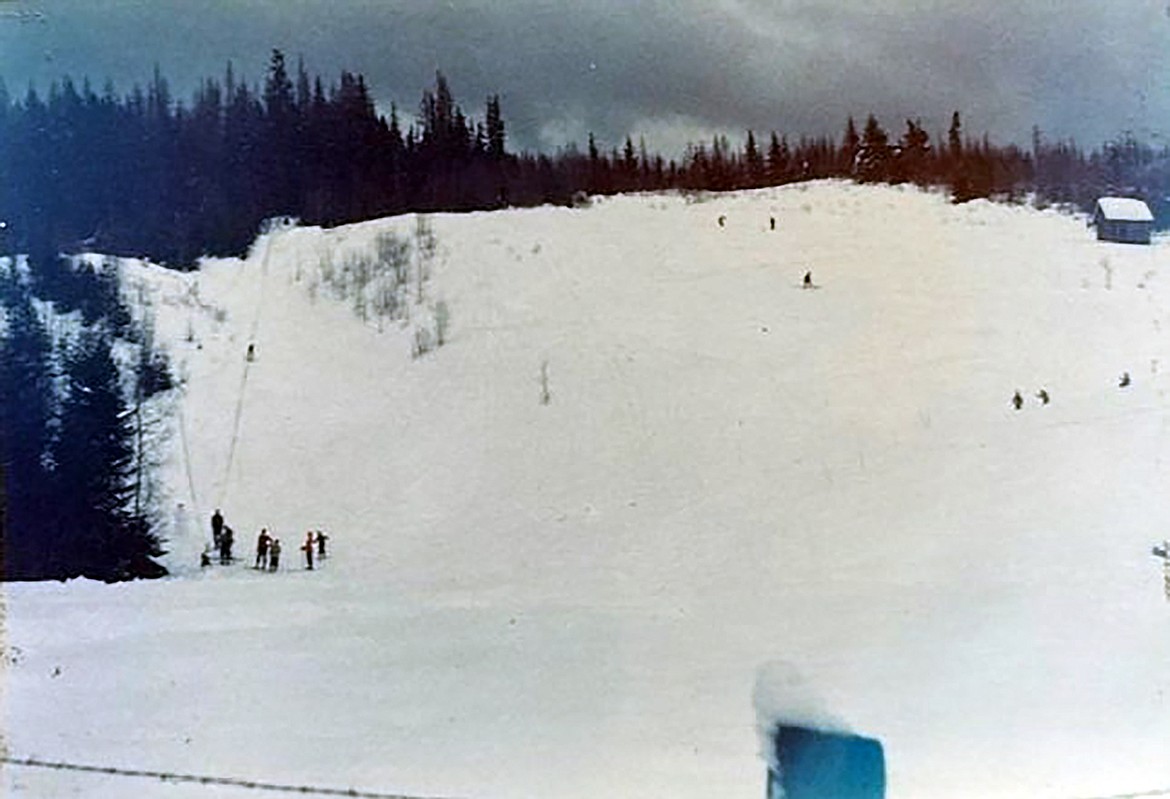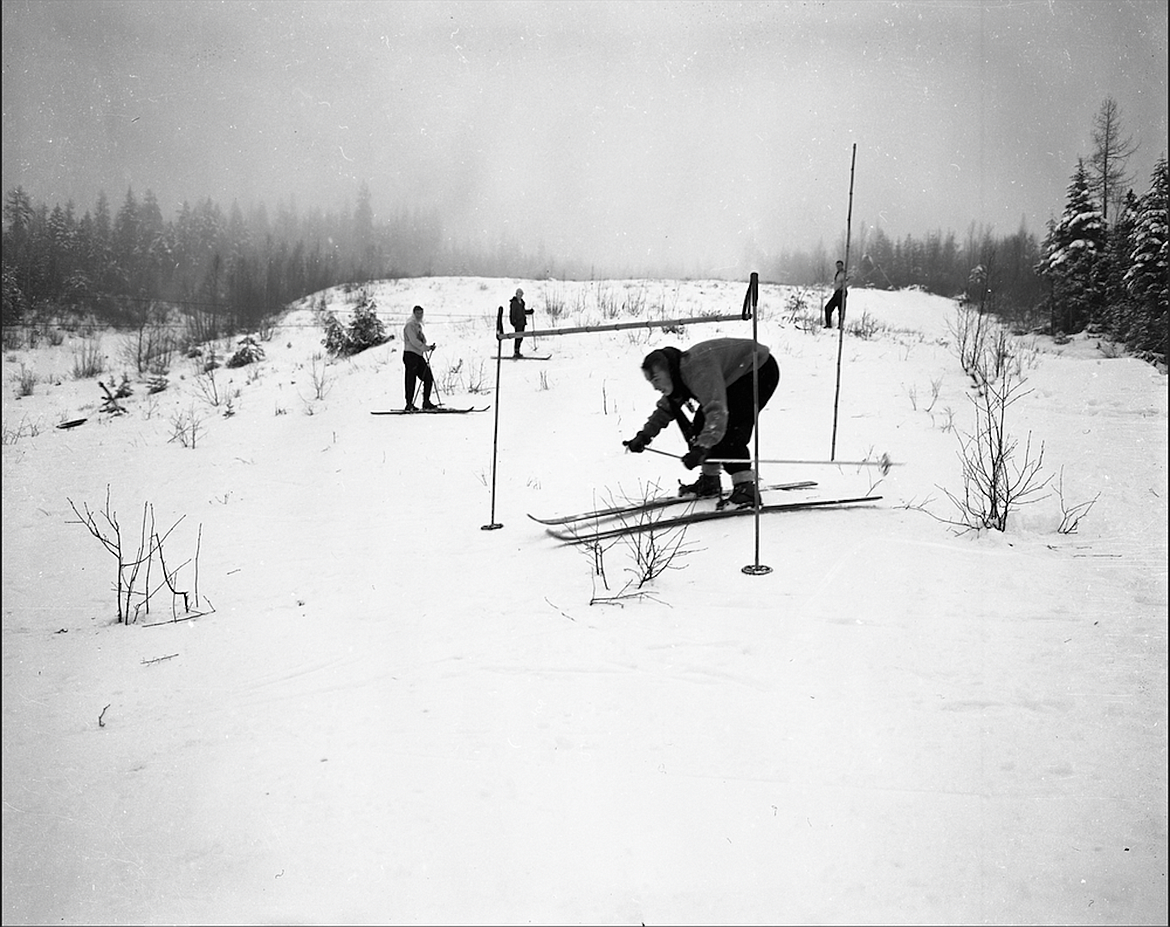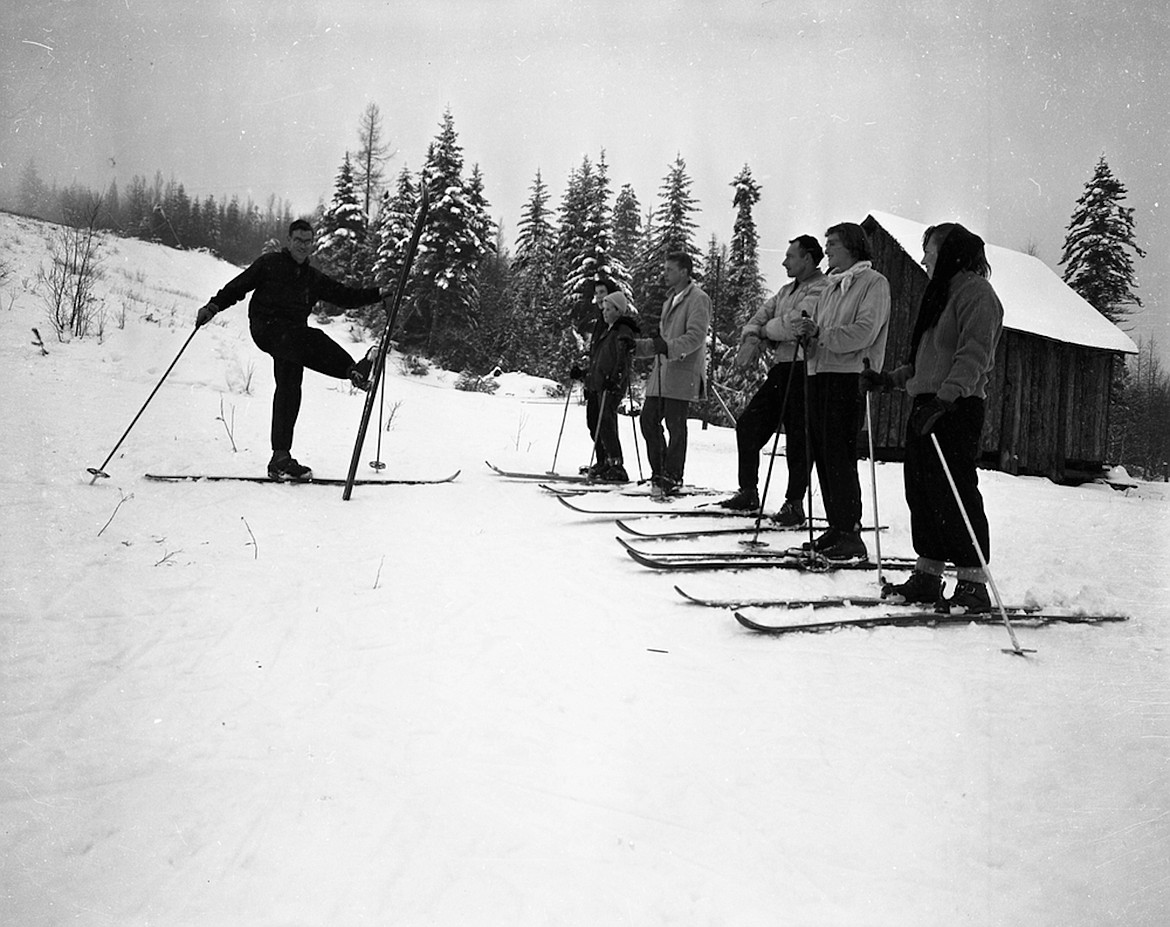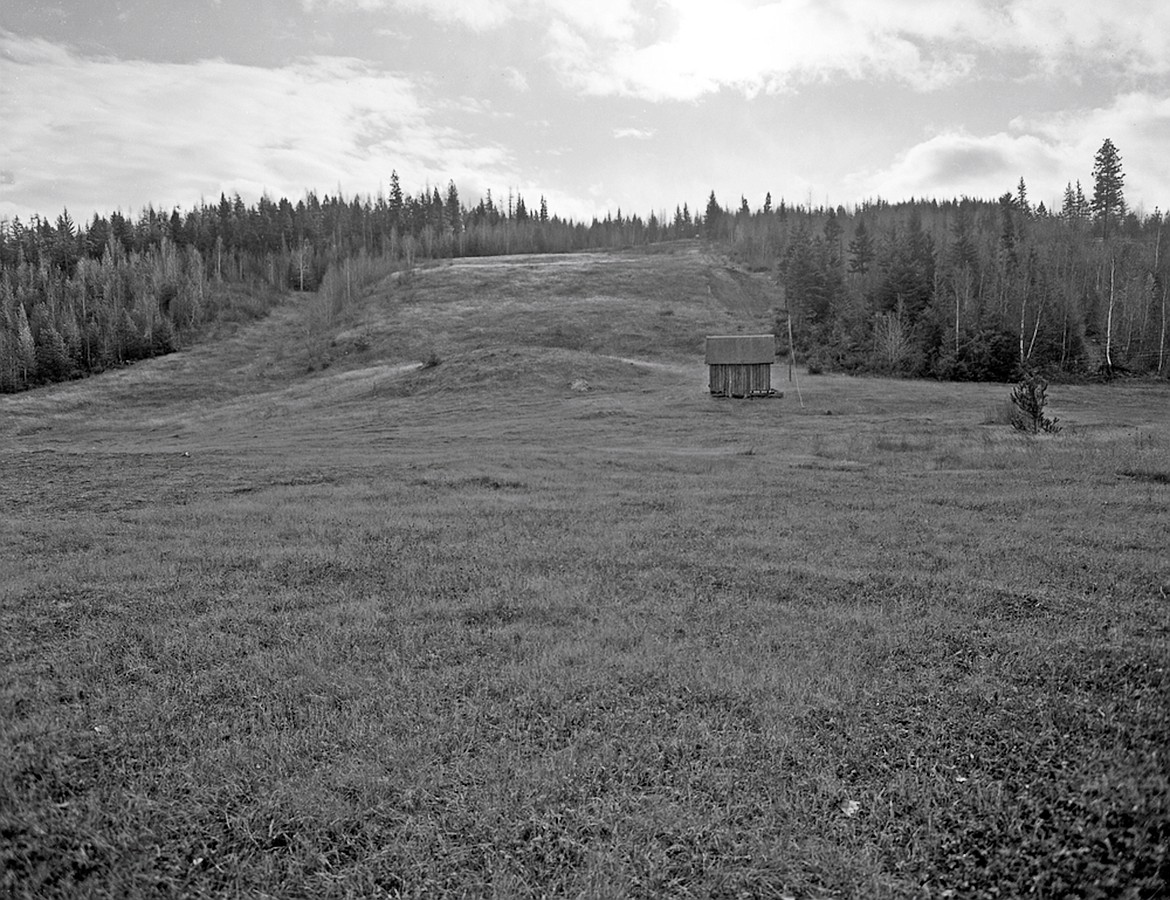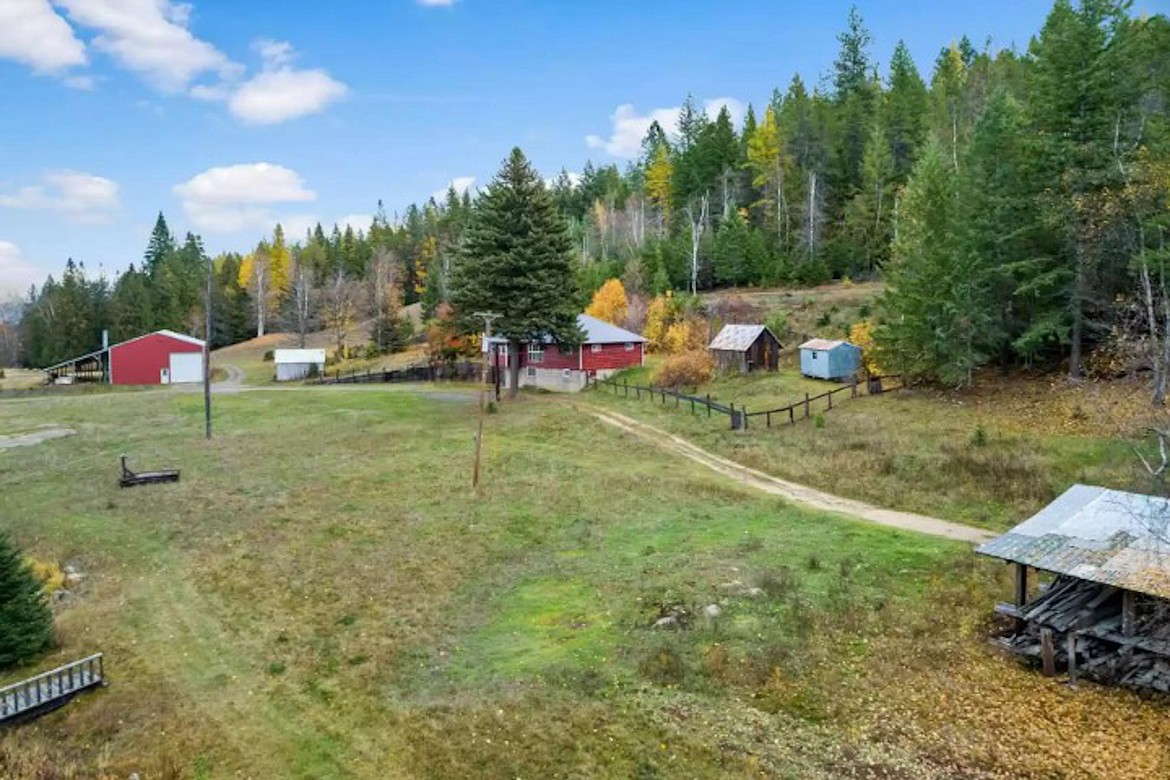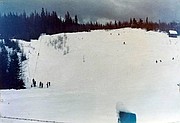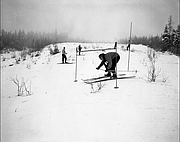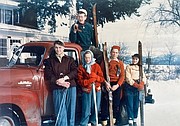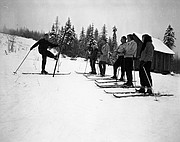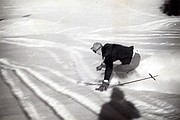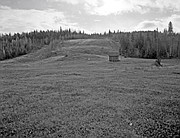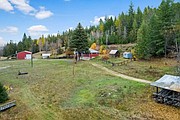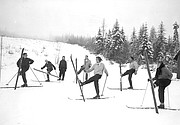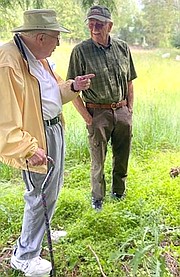Pine Street Hill: Memories and magic
MARCY TIMBLIN Contributing Writer | Bonner County Daily Bee | UPDATED 2 years, 2 months AGO
For more than half a century, the steep hill on West Pine Street has attracted winter sports enthusiasts with a penchant for adrenaline. Known by locals as the Pine Street Hill in the 1940s, it was the destination for Sandpoint area skiers before Schweitzer Mountain Resort opened in 1963.
A casual operation set on privately-owned land, skiers volunteered their time to install and maintain the towrope operated by a portable ski lift motor. Calling themselves the Sandpoint Ski Club, they earned money to buy the motor and pay for gas to run it by raising and selling pigs, procuring donations from local businesses, and asking their parents for money.
In early 2022, Fritz Holz was perusing the Daily Bee when he spotted an image that flooded his mind with memories from his teenage years. A photo taken by Jim Parsons Jr., captured young skiers atop a scantily snow-covered hill. He recognized the teenage girl in the foreground who was skiing under a limbo stick. It was his twin sister, Sally. Fritz wondered if he might be one of the onlookers in the background.
Fritz, a tall man wearing barely faded Wrangler jeans and a button-up shirt, stepped into the Kaniksu Land Trust office to inquire about the photo. Almost giddy, the 88-year old man recalled moments from seven decades earlier. For nearly an hour, the stories poured out as if he was talking about the day before. He reminisced about his friendships, a 1940s-era Sandpoint, and a winter sport that connected this community to the land.
Fritz started skiing in 1947. He had never skied before, so he borrowed his dad’s old wooden skis and taught himself how to ski on the Pine Street ski hill. He and his friends including his sister Sally, (who later married Bob Parsons), Gary Pietsch, Shirley Brixen-Wendle, Bob and Gary Maxwell, Barb Parsons, Jack Morrow, Jack Selle, Olive Mayo, Jimmy Van Sant, Bud Van Stone, Bob parsons, and Jim Parsons Jr., among others, would walk side-step up the hill to “groom” it for the day’s skiing.
Jim Parsons Jr. was one of the “older kids,” probably around 19 years old, when Fritz and Gary took up skiing. Jim moved to Sandpoint from San Diego, California in 1945 with his family. The ski hill wasn’t operating at the time, but he and his fellow Sandpoint High School students became interested in skiing. Coming from California, he says, “I had no idea what color snow was.” Unfamiliar with the snow plow technique of slowing down, he and the other beginners would put their ski poles between their legs and sit on them to stop.
Gary echoed that sentiment. “We didn’t have any formal instruction. We just skied until we fell down.”
In 1946, Jim and his skier friends started the Sandpoint Ski Club and went on a mission to get a tow rope for the hill. Raising money by taking collections from town residents and business owners, the group was able to buy a Swedish Ski Tow and 1,800 feet of rope, which allowed for about 900 feet of rope tow once installed. Jim raised pigs and put his profits toward the effort.
The motor for the tow was mounted on a toboggan and driven up to the top of the hill where the tow was anchored to a tree. A tripod held a large pulley at the bottom of the hill. The motor operated from a shed on the east side of the hill.
On weekends, Christmas break, and snow days from school, skiers pitched in to help operate the ski hill. Whoever got there first would start the motor and get the tow rope running. No one officially oversaw operations.
“It was operated haphazardly in ‘48 and we had a great time,” Gary continued.
The tow was capable of taking three small kids or two adults at a time. Jim and Gary do not remember being charged to ski, but Fritz recalls a 25-50-cent charge to pay for gas. Gary said that he and his friends would “badger our dads into letting us buy gas for the motor.”
Fritz said that he would pour gas in the carburetor and put his hand over it to choke it. “I can’t remember how the gas got there. I think [Ward] Tifft got it.”
An inch in diameter, the original hemp rope (later, replaced by a nylon rope) would freeze. Skiers would side step up the hill to pull it out of the snow. Fritz had learned to tie knots and splice rope from a Navy soldier who had stayed with his family while serving at Farragut Naval Station.
“Fritz was pretty good at splicing rope when it broke. I learned how by watching him,” Gary said.
Skiers could bring clamps called “nutcrackers” to attach to the rope for hanging on as they rode up the hill. Fritz remembers leaning his back against the rope and holding on with one hand while grasping his ski poles in the other.
A student of legendary photographer Ross Hall, Jim often took breaks from skiing to capture moments on the hill with his friends. Ross and his wife, Hazel also frequented the hill, Ross took pictures while Hazel would ski.
Ross and Jim’s photos of those years at the Pine Street Hill are now preserved by the Bonner County Historical Museum.
Most years, the snow barely covered the shrubs that grew on the hill. But, Gary remembers an epic ski year in 1948.
“It snowed something fierce: over 6 feet of snow in Sandpoint. Snow plows couldn't even plow it all. The 76 Service Station gave away the 76 balls for car antennas because it was the only way to see cars above the berms,” he recalls.
Gary and Fritz were freshman in high school at the time and remember skiing the Pine Street Hill every day of Christmas Break that year.
After high school, Fritz Holz and Gary Pietsch attended the University of Idaho. Gary tried out for the ski team and skied on the team for two years. Fritz took up competitive swimming, but continued recreational skiing.
After college and military service, Parsons returned to Sandpoint and was part of the movement to put Sandpoint on the map as an official ski town.
As the timber industry waned, the Sandpoint Chamber of Commerce and city leaders began to consider tourism as a viable option to boost economic development in the area. While the Pine Street Hill was a popular ski destination for locals, it didn’t meet the criteria for a full-fledged ski mountain.
“The biggest problem with Pine Street was the altitude of the hill and not really getting deep snow,” Jim commented.
Initially, the tourism group considered Baldy Mountain as the future location for a Sandpoint ski resort. The group approached Burlington Northern Railroad to finance the recreation property, but studies indicated that Baldy Mountain would not be a suitable location and discussions with Burlington Northern ceased. When the mountain that would become Schweitzer was discovered, Jim was integral in the advancing of the effort to make that happen.
“We walked in to [Schweitzer Mountain] many times with seal skins on our skis to help advance the Schweitzer deal,” Jim recalls.
Finally, in 1963, Schweitzer Mountain Resort opened and the Pine Street Hill was laid to rest as the local skiing spot. Just one year later, in 1964, Joe and Lois Weisz bought a 20-acre parcel of the land where that ski hill once thrived, later acquiring additional acreage that came to make up the 208-acre Weisz family farm. This land, meant for so much more than a single family, would once again become a community icon.
“My parents, Joe and Lois Weisz purchased the Pine Street Ski Hill in 1964 from friend and neighbor Anna Roe," the couple's son, Gary Weisz recalls. "The hill had been open for public enjoyment many years prior to that and our family, being community minded, continued that neighborly tradition for the next 50 years or so.”
This conspicuous hill set along West Pine Street seemed to call out to onlookers seeking gravity-powered fun. As the Weisz children were spotted playing on the hill, friends and neighbors would ask for permission to sled the epic hill as well.
Continuing the legacy of allowing community access on the land, the Weisz family welcomed all who wanted to play on the big hill. It was never promoted as a public park, but by word of mouth, it became widely known as the Pine Street Sled Hill. The Weisz family never charged a usage fee and were happy to share their special place with a grateful community.
“Looking back, I remember youngsters my age enjoying a day’s outing, often accompanied by their parents or grandparents. Years later a number of those young folks now had families of their own, returned with their young children in tow,” Weisz reminisced.
Kaniksu Land Trust purchased a 160-acre section of the Weisz property, and in the fall of 2019, opened Pine Street Woods to the public. The family retained the 48-acre homestead with the historic ski and sled hill until Joe’s death in 2021. When the parcel was put up for sale, the community looked to KLT to preserve this beloved community icon.
“With much sadness and regret, due the failing health of my parents, as well as liability concerns, we closed the sledding hill in late 2020. After Kaniksu Land Trust became the new owners of 160 acres (Pine Street Woods) of the family farm it was our entire family’s wish the remaining 48 acres, which included the sledding hill, become part of the land trust and remain open for public use in perpetuity. I believe the entire community looks forward to the reopening of the Pine Street Sledding Hill,” Weisz concluded.
KLT announced its intention to purchase the parcel and the Daily Bee ran a front page feature. That story is what brought Fritz to my office. After sharing all he could about his memories as a teen skier at the Pine Street Hill, he shook my hand and said, “Thank you [KLT] for your work.”
It has been such a gift to have met and become friends with Fritz, Gary, and Jim since KLT announced plans to Save the Sled Hill. Sadly, Jim passed away while this piece was being written. He was 91 years old. The last time we met, he gave me a handwritten copy of his memoirs about the early days of skiing in Sandpoint along with a copy of one of his photos of the Sandpoint Ski Club.
Jim spoke many times of the old tow that has since disappeared from the ski hill. Out of concern that the artifact could be lost forever, he asked me to publish a request to the individual storing the tow.
“I’d like to see if the present owner would either donate it to the Bonner County Museum or to Kaniksu Land Trust,” he wrote in his memoir. He also said, “I thank you for keeping it safe and dry.”
Fritz, Gary, and Jim celebrated how the Pine Street Hill impacted their young lives, strengthened their friendships, and shaped the Sandpoint community. I am so grateful to the three of them for sharing their memories and their inspirational story of enduring friendship.
It seems this special place was always destined to belong to the community. As we work to preserve this land for future generations through the “Save the Sled Hill” fundraising campaign, these stories of friendship, community, and connection to the land are at the forefront of this effort. We look forward to opening the hill back up to sledding and possibly skiing, perhaps installing a new tow rope for making that steep climb to the top over and over again. Many in our community have touching memories of their time on that hill. Let’s make those memories come alive and create new ones with every generation as we save the sled hill … forever.
Kaniksu Land Trust is currently fundraising to purchase the Pine Street skiing and sledding hill property. To learn more or donate, visit www.kaniksu.org/savethesledhill or call 208-263-9471.


